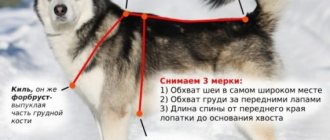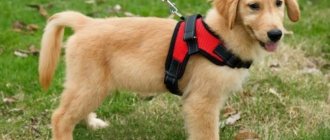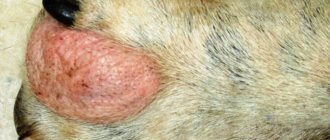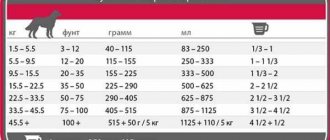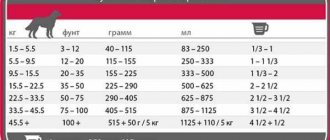What to consider when choosing
Harnesses can be used for various purposes: for regular walks, sports activities or official work. In winter, they can also be used traditionally - to harness a dog to a sled and transport loads with it. Such events can be turned into an interesting game - a pet pushing a child on a sleigh will get the physical exercise he needs and give the family a lot of positive emotions. To know how to choose the right harness for your dog, focus on the following indicators:
- Material. Manufacturers use durable, soft and wear-resistant materials. At the same time, not all companies treat their work responsibly. Please note that during walks a lot of dirt will appear, so the harness should be easy to wash. It is best to make a choice with a minimum amount of knowledge about all the available varieties. For dogs of miniature breeds, light woven products are suitable, while for a wolfhound the best solution would be a heavy leather harness;
- Zas
At what age is wearing indicated?
Veterinarians do not recommend wearing harnesses on puppies. The accessory can only be used after the pet is 10 months old. Dwarf breeds can wear the attribute after six months.
This is due to the risk of deformation of the front paws during walks. When the harness passes through the armpits, changes in the joints may form. Paws can become deformed very quickly; just three weeks of wearing a harness is enough for this to happen.
The accessory should not be worn on small puppies during the formation of the skeleton.
What are the types?
A walking harness is the most common accessory option, often made of thin material, such as nylon or leather. A riding harness for dogs is one of the very first types of harnesses. This is a more complex system of belts and pieces of fabric, involving the assembly of dogs in one chain for sports competitions or harness racing. The materials for such harnesses are often canvas and nylon. The vast majority of these accessories are intended for large sled dogs such as huskies and malamutes.
A weighted harness is used to train the physical qualities of dogs when it is necessary to better develop them for competitions, and to fix the position of injured dogs and animals after operations. A weighted harness prevents dogs from jumping high and forces them to stay closer to the ground. This is suitable for large and medium breeds, while it can cause injury in small ones.
A harness-vest is a more advanced version of a harness that looks like an element of outerwear. Designed for small and medium-sized short-haired and hairless breeds, helping to insulate dogs in the cold season. Sometimes used as a fixative for medical purposes. The guard harness has increased strength. It consists of 2 or more layers of material, reinforced with stitched belts and metal rings. Used for dogs in protected areas to prevent them from running away.
A puppy harness is a lighter version of a harness designed for walking puppies . The start of using a harness is different for different breeds, but not earlier than six months of age, since a puppy’s muscles and bones are not yet as strong as those of an adult dog.
What to consider when choosing
For dogs, make sure it is easy enough to put on and take off. Several fasteners will increase its resistance to tearing and make it more comfortable for your pet - you can easily adjust its size so that your dog does not feel discomfort;
- Fit to the body. Ideally, the straps are attached tightly to the body so that they do not move when moving. At the same time, the accessory should not restrict the pet’s movements; excessive tension will make walking and running difficult, and can cause inflammation and hair loss in the contact area;
- Matching sizes. Knowing how a harness should sit on a dog will help you make the right choice. First of all, you need to take into account that its upper part must fully correspond to the width of the back (measurement is carried out with a centimeter along the body, taking into account thick fur).
The main requirement for the product is convenience for daily use, but the owner must take into account that it should not be used daily. The harness is considered as a tool for training and special physical training of the pet, but too frequent use can damage the coat. After a walk or completing a required task, it is better to remove it; leaving the dog in a harness at home unattended is unacceptable, as this can lead to undesirable consequences.
Consider your needs and your dog's needs
After evaluating the above qualities of a harness, see what you like and suits your style. Do you dress in the latest fashion and want something colorful and bright? Or are you more practical and want to choose a harness that fits your dog and won't get dirty easily?
After choosing the perfect harness for your dog, be sure to provide him with a nutritious diet for an active lifestyle. If you want to continue using a harness as your dog gets older, make sure your dog has healthy, strong joints. Also avoid injury and long distances when walking. If you notice that your pet is walking slower or is uncomfortable, talk to your veterinarian and choose a new food or harness so that your dog can enjoy walking with you.
How to measure a dog for a harness
An inexperienced owner does not know how to determine the size of a dog harness. This task can be overwhelming, especially if you go to a large pet store. Sellers can give certain advice, but it is better for the potential buyer to know how to choose the right size harness for a dog. This is especially important for those who make purchases online. To avoid mistakes, you need to take the following measurements using a centimeter:
For representatives of medium and large breeds, a good choice would be equipment made from woven braid or leather. The product must be equipped with steel carabiners and solid rings. This requirement is also true for dogs of small working or hunting breeds - miniature schnauzers, dachshunds, and others. For representatives of decorative breeds, appearance and comfort are more important, so nylon or velor models are the best choice here.
How to choose the size
A harness is a training attribute. It cannot be worn every day, much less leave the dog alone at home. For the dog’s convenience, the accessory is selected according to size.
The main parameters are the volumes of the chest and neck. But back length and weight also matter.
For your information! Size S with a chest circumference of up to 36 cm is suitable for mini Yorkies and pinschers. Chinese crested and toy poodles wear size M with a neck volume of 23-27 cm. Pug and French bulldog wear size L/XL (chest - 54-60 cm, neck - 38-42 cm).
When can you use ammunition with weights?
Pedigree: food for dogs and puppies of small and large breeds
Dogs of fighting breeds begin to be trained using weighted equipment from the age of one year. It is generally accepted that for raising representatives of non-fighting breeds who have not yet reached 1.5 years of age, the use of weights is not permissible. If the dog is predisposed to joint diseases, they are not used at all.
Alternating days of exercise with days of rest, the dog breeder makes notes in a specially kept notebook. Records are kept in pen and are issued in the form of mini-reports on the pet’s health status and changes that have occurred in the dog’s body during training.
Dog equipment with weights
During the first two weeks, the dog is put on a harness with empty pockets. Then the pockets are loaded for a short time with a small amount of weights, the total weight of which is from 50 to 100 g. Weekly, the load is increased by 50–100 g, first of all by weighting the side pockets, and then those located on the back. The maximum weight of loads placed on a young dog should not exceed 4 kg.
Equipment with weights is put on the dog for 30 minutes after warming up, consisting of trotting and jumping. After 5 training days, the dog is given 2 days to rest. During this time, the dog is walked without weights and is not forced to run, jump or overcome obstacles.
Note! Carrying weights around haphazardly can lead to depressing consequences - the animal’s back will bend, the heart will weaken, and the limbs will become twisted.
Dog Harness Size Chart
Size Belt width in mm Chest coverage from max to min (cm) Dog breeds XL2513090 Central Asian Shepherd, Dogue de Bordeaux, Caucasian Shepherd L2510070 Doberman, German Shepherd, Giant Schnauzer M258060 Labrador, Golden Retriever, Setter X207050 Spaniel, Beagle, Miniature Schnauzer cerXS155540pug, West Highland white terrier, small poodleXXS154533Toy terrier, miniature pinscher , Yorkshire TerrierChoosing the size of the adjustable collar
To determine the size of an adjustable collar, half-choke, you need to measure the full circumference of the dog’s neck in the place indicated in the figure. The measurement should be done with a tailor's meter or tape, which can then be measured using a ruler. Be sure to measure tightly across the body, squeezing the wool.
Select the size from the range in which the largest margin is larger and smaller relative to what you got. This will allow you to avoid problems with adjusting the collar during natural fluctuations in the volume of the neck (for example, shedding).
| Neck circumference | Collar size |
| 19-27 | XXS |
| 25-35 | XS |
| 32-45 | S |
| 42-60 | M |
| 58-78 | L |
How to put a harness on a dog, step by step guide
An owner who has only recently acquired a pet may face categorical rejection. He will resist in every possible way, trying to free himself from the tight harness. This is completely natural, because the dog may not immediately appreciate all its advantages. But if you do the right thing, then over time he will rejoice at the sight of the harness in your hands, because for him it will become a symbol of a walk and a fun time.
How to measure a dog for a harness Knowing how to put a harness on a dog can waste a lot of time; some owners, after several unsuccessful attempts, generally consider it as a useless accessory, depriving them of all the benefits that it can provide. To put it on quickly, use the following guide:
- If your pet is disobedient and refuses to obey, secure it between your legs in the back area.
- Before putting a harness on your dog for the first time, distract him with a favorite treat or toy. If even at this stage you are unable to achieve the required results, then conduct several exercises for endurance;
- Place the ring-shaped part of the closed-type harness around the chest in front of the paws; its dimensions may vary depending on the design of the accessory;
- Next, position the strap along the top of the case to the desired position, thereby limiting the space between the jumper and the closed circle. The right paw is threaded into the area between the closed circle and the strap;
- The jumper passes through the surface of the chest, a strap is put on the right side, after which the loose part must be threaded through the armpit of the left paw. Next, all that remains is to fasten all the belts.
After you manage to tie the dog harness, release it, adjust it and make sure that the accessory does not choke your pet and fits firmly enough to his body. The last step is to check the fastened parts. Even using step-by-step instructions on how to put a harness on a dog, you may encounter certain difficulties. Take your time, perform all the steps sequentially, and do not hesitate to ask questions to familiar dog breeders or store sellers. Harnesses may vary in design, but the principles remain the same.
Peculiarities
A harness is a dog accessory consisting of intertwined straps and strips of fabric . It is gradually replacing the collar due to its greater comfort for the pet and the reduced risk of neck and back injuries. When choosing this material, you need to take into account the physical strength and temperament of your animal, the design of the product itself and its material. The main thing is that the harness is comfortable for the dog: it does not restrict its movements, does not press on muscles and blood vessels, but at the same time does not hang down so that the dog does not get injured.
The principle of putting a harness on a dog is a little more complicated than a collar, but it is easy to master, and the animal gets used to the more convenient option in 1-3 times. Here is one option for how to properly put a harness on a dog:
- Secure the dog: reduce the motor potential of the big one and pick up the small one.
- Insert the front paws into the corresponding holes in the harness itself. Large dogs do this in turn, and small dogs are simply placed.
- Fasten the straps so that they fit well and correctly to the dog’s body, do not squeeze too much and do not dangle too much on the animal.
- Attach a leash to the harness and go for a walk.
For large breeds
The harness for oversized large dogs is designed to work with heavy loads. Usually they try to choose a wide leather model that can withstand the significant weight of the animal, multiplied by the speed of its jerk.
Important! Departmental nurseries often use sets with molded buckles - a large animal at the peak of activity can loosen a simple harness or bend a thin ring, from which the belt or leash will immediately fall off. Such a device costs more, but it also has a much greater resource.
For ease of walking, these devices come complete with structures that allow you to hold the leash freely and not tightly. Most often this is a carabiner or a brace connected to a ring located on top of a strip running across the back.
Convenient, especially if the dog is relatively calm and not prone to aggression. But for walks with representatives of fighting or service breeds, such a product is unlikely to be suitable.
For small breeds
Dwarf dachshunds, Spitz dogs and animals of similar size are the “clientele” of mini-harnesses.
In appearance, they are the same as devices for large dogs, only adjusted for size. There are perhaps more materials and colors in this segment than in any other.
Having put such a kit on your mini-dog, you can be sure that he will not go anywhere. In addition to the traditional leash and fastenings, these sets are often equipped with handles firmly sewn to the back strap. That is, an animal that has become excited can simply be picked up and carried away from a dangerous place.
For puppies
The youngest individuals require a special approach. The bone structure of babies is not yet formed, and a regular harness can disrupt the development of paws and muscles (especially in the sternum area).
Did you know? Dogs detect sounds with a frequency of up to 35 kHz, and the human ear works with ranges up to 20.
To avoid such difficulties, puppy kits are used from 6-9 months. The exact figure depends on the breed, so it is worth consulting with your veterinarian.
These sets stand out right away - the strips are narrower, and their leather or nylon base is well lined with soft material (so that the “harness” does not dig into sensitive skin).
For exhibitions
Here it is important to consider not only functionality, but also design.
The decoration and fittings should emphasize the color and noble character of its wearer. This also applies to the color scheme.
Much depends on the owner. The fact is that in pursuit of show endurance, sometimes they resort to trickery, putting a deliberately uncomfortable set on the dog (believing that by taking a size smaller, it will be possible to control its behavior unnoticed by visitors). The result is microtrauma and stress, plus the risk of not qualifying for the next examinations.
Find out what grooming is, how to make a pattern for a dog's overalls, how to choose a clipper and a furminator for your pet.
The other extreme is comfortable, but too bright LED-type harnesses. The flickering lights will only irritate the dog, and he will most likely try to get rid of the source of discomfort.
Freight
Used for training four-legged athletes.
There are two types:
- Half-vests with side pockets in which cargo is placed (rounded stones or bags of sand).
- Standard products with an additional belt, on the edge of which there is a ring with a chain that covers the weighting material. Usually this role is played by a car tire.
The main task is to develop the main muscle groups. In order for the classes to bring only benefits, you will have to control their progress. Jumping and too sudden jerking while wearing a weight harness are contraindicated. Important! During training, make sure that the “weight” in the pockets does not scratch or clog the client’s side. It is better to put sharp or too heavy objects aside.
Vests
Ideal for winter walks for pets with short hair or fine lines.
It is preferable to take products with a fur lining of small thickness - after running around in a vest that is too thick, the dog may catch a cold.
For sledding breeds
A sled harness is only suitable for a hardy and “diversified” dog - a Malamute, Husky or Samoyed.
The design combines strength and comfort for the dog himself. It is sometimes difficult to select such a product, so the way out of the situation is by ordering such kits from craftsmen.
This entails some costs, but such custom tailoring for dogs takes into account all the characteristics of an individual animal. The materials used are durable and moisture-resistant nylon or canvas.
The device itself is also different - there are more belts, as well as fastening rings (which allows you to evenly distribute the load on the body).
Criterias of choice
As you can see, choosing the right product can be difficult. You have to take into account a lot of factors, from the size to the temperament of the dog - the same walking harnesses selected for a husky and, for example, a dachshund will differ in both dimensions and design.
Did you know? After the First World War, German Shepherds... lost their name. In the wake of anti-German sentiment, these cute dogs were renamed Alsatian wolf dogs.
To make the task easier, let’s find out what you should pay attention to when choosing a set for your pet.
Material quality
Synthetics are a priority - such materials are not afraid of moisture, are easy to wash and are durable.
All this fully applies to the popular nylon, which due to its structure is ideal for working even with large dogs. Harnesses based on it retain their shape for a long time and hold the seams, despite heavy loads.
The skin looks more presentable. But it is not very suitable for active activities: with prolonged contact with water, this material stretches, and after drying it becomes rigid, cracking over time.
Wanting to save money, many people take harnesses made of canvas tape. In terms of strength, they are good, but their service life is short. The “tarpaulin” has one more property: once it gets wet, it takes a very long time to dry.
In any case, before purchasing, it is advisable to make sure that the dog is not allergic to the selected material (this happens).
Number of fasteners and straps
When deciding for yourself how to choose the most comfortable harness for your dog, you need to remember about the accessories.
For a small dog, a minimum of strip belts will be enough: for a dog with a small weight, they will be enough. The fastener in such cases may also be plastic.
Important! Too few fasteners can play a cruel joke on a well-fed dog: it may have to be literally pressed into the harness. So when choosing, it is better to take it with a reserve.
Instances with a more powerful build will only need a metal one. The number of belts is selected based on specific purposes: for a normal walk, 3 are enough (one wraps around the sternum, and two more are connected to it, responsible for the base of the legs). If we take the riding type, then there are already several belts that overlap along the entire length of the body, and a fastening carabiner is attached to the edge.
All fasteners must fit well and sit neatly in the straps. The straps themselves are adjustable in size, do not touch the armpits (if we talk about the side) and hold firmly, which is necessary for the strip on the back.
Assess the integrity of the rings. They must be strictly steel and durable. Unreliable elements may fail after just a couple of walks, so make sure they are reliable.
It will be useful for you to know: what are the reasons for licking dogs' paws, how to choose toys, how to make a booth and enclosure with your own hands, how estrus and mating work, what inbreeding and mixed breed in dogs are.
Naturally, all this should be as convenient as possible for the wearer. A too tight fit is excluded - having rubbed the bald spot, the dog runs the risk of getting skin problems in addition to discomfort.
Right size
Having gone through a lot of options, owners settle on models that are not particularly large, and on the other hand, do not squeeze the dog, causing it pain. The further use of the product is also important - medical and walking harnesses will differ slightly in size, even if we are talking about the same individual.
Did you know? In the Middle Ages, dogs could be judged in all seriousness. They were mainly accused of indecent behavior. It is curious that, along with mongrels, cats, cows and even pigs turned out to be “defendants”.
Because of this, the question of how to choose a good harness for your dog, based on size, sometimes turns into a whole problem. But don’t despair - everything can be solved if you keep the basic parameters in mind.
Types of harnesses
The modern market for accessories for dog breeders is very diverse and is represented by a large number of products of different types. They can be divided into groups according to size, type of materials used, and purpose. Some models are complemented by special pockets for cargo, fastening rings for harnesses or other elements that expand the functionality of the product. When you go to a pet supply store, you can find the following harnesses:
- Walking. The fastening ring on them is fixed in the withers area. They are well suited for daily walks, which is especially convenient with small pets. Products of larger sizes are equipped with additional belts;
- Towing. Their purpose is sports competitions. Such harnesses are worn on hyperactive dogs prone to non-stop forward movement. With their help, they train the chest muscles for German Shepherds and other breeds. I use it for them
Dog Harness Size Chart
bonds. If your dog requires increased physical activity, use weighted harnesses. Some models are complemented by weights sewn inside, others have pockets with metal bars with which the weight can be adjusted. Their use is advisable for strengthening muscle mass after fractures.
Pay attention to the article types of harnesses.
Progressive dog handlers never wear a harness for every walk and activity. The load should be uniform and appropriate. It is most convenient to train your pet at a very early age, at the same time as a collar, in which case you will need a miniature harness designed specifically for puppies. By putting it on your baby already at this stage, you can accustom him to the idea that a harness and other types of equipment are primarily associated with walks and having fun.
Material.
Although some types of harnesses provide better control and will encourage your dog to avoid dirty areas, it is still necessary to wash and clean the harness from time to time, especially padded harnesses. Some owners like leather products because of the tactile sensation after polishing it. A leather harness is less likely to irritate your pet's skin because you can constantly clean it. Others prefer nylon harnesses because they can be washed quickly and easily. You can choose the ideal material based on your dog's size, allergies, and skin condition.
Purpose and design
Such equipment is designed to control the pet’s behavior during a walk and makes it possible to hold it in the most comfortable position.
These products have been around for a long time. True, they were not very well known to a wide circle of dog handlers - for a long time they were used only in sledding. But the convenience of a simple device made it popular and widespread.
This device looks quite simple: fabric or leather belts, running across the chest and along the body (bottom of the body or along the back), are connected in the area of the front legs and spine.
Important! If your dog is nervous due to frequent jerking of the collar, it is better to temporarily switch to a harness (without waiting until his behavior becomes dangerous to others).
This scheme is safe for the dog. If there is a need to hold her, the pressure from the leash is distributed over many points (while the leash simply digs into the neck, causing pain).
Correct fastening.
Narrow your choices by deciding how you want to attach the leash to the harness. VetStreet reminds: there are two main types - front and rear mount. The choice depends on the dog.
Front mount, rear mount or just a leash?
A front-mounted harness allows for better behavior control, but may not always be able to contain an aggressive dog. It is also braided under the front legs. The harness with rear fastening is very convenient to use when putting it on and to protect your pet's neck. Unlike a front-attach harness, this type limits control over the dog's trajectory. However, for training purposes, any harness is better than a leash, since when you are leading your dog, it is important to not harm his neck. If the dog has already been trained, it may not require additional trajectory correction, and the leash will help ensure that the dog moves next to you. Not sure what's best for your dog? Ask your veterinarian, who will explain all the options and help you choose the right one.
If and when you use a harness, remember that side-mounting is becoming more common in training as it provides gentle and constant control of movement. A harness with a leash attachment in the middle of the dog's back helps to rein in the dog and thus gives him better control than a regular leash, but it puts unnecessary strain on you.
